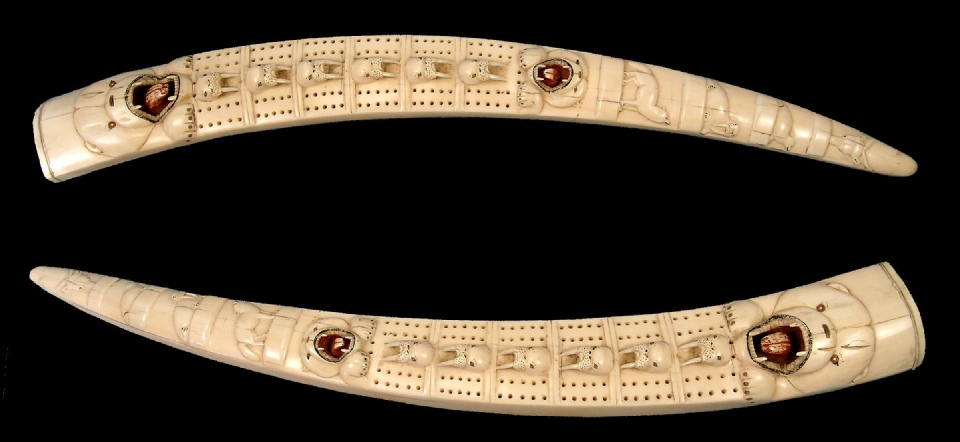Remarkable Inupiaq Polar Bear Cribbage Board
This exquisite polar bear cribbage board showcases the remarkable artistry of an unknown Inupiaq artist.. The carving is made from a single piece of ivory. The board features two polar bears which have meticulously detailed teeth. Furthermore, red ink highlights the polar bear tongues. Additionally, six walrus head figures, inked in black, adorn the board. The cribbage board is from a time period around 1925 and it is from King Island, AK.. The board is 25 inches long, 2.8 inches wide, and 1.9 inches high. This stunning cribbage board is sold.
Cultural Context and Significance
The Inupiaq people, originally from the King Islands, now predominantly live on mainland Alaska. During World War II, a tuberculosis outbreak, the closing of local schools, and the lure of off-island economies prompted many families to relocate from King Island. By the 1970s, most families had moved. Today, many Inupiaq reside near Nome, Alaska.
Whales and walruses play a crucial role in the nutritional and cultural practices of Alaska Natives. They utilize the meat, blubber, skin, and organs as rich sources of food. Additionally, they process the hides to cover boats, and carve the tusks into intricate ivory walrus carvings. These carvings are highly valued by collectors, providing a source of income for the artists.
In addition to ivory carvings, Inupiaq artists also create baleen baskets, further showcasing their diverse craftsmanship and deep connection to their environment and heritage.
For further information on Alaskan Native arts and the historical context of the Inupiaq people, you can visit:

Artist Unknown ca 1925
Carved polar bear cribbage board from King Island
Walrus ivory & colored ink –
SOLD

